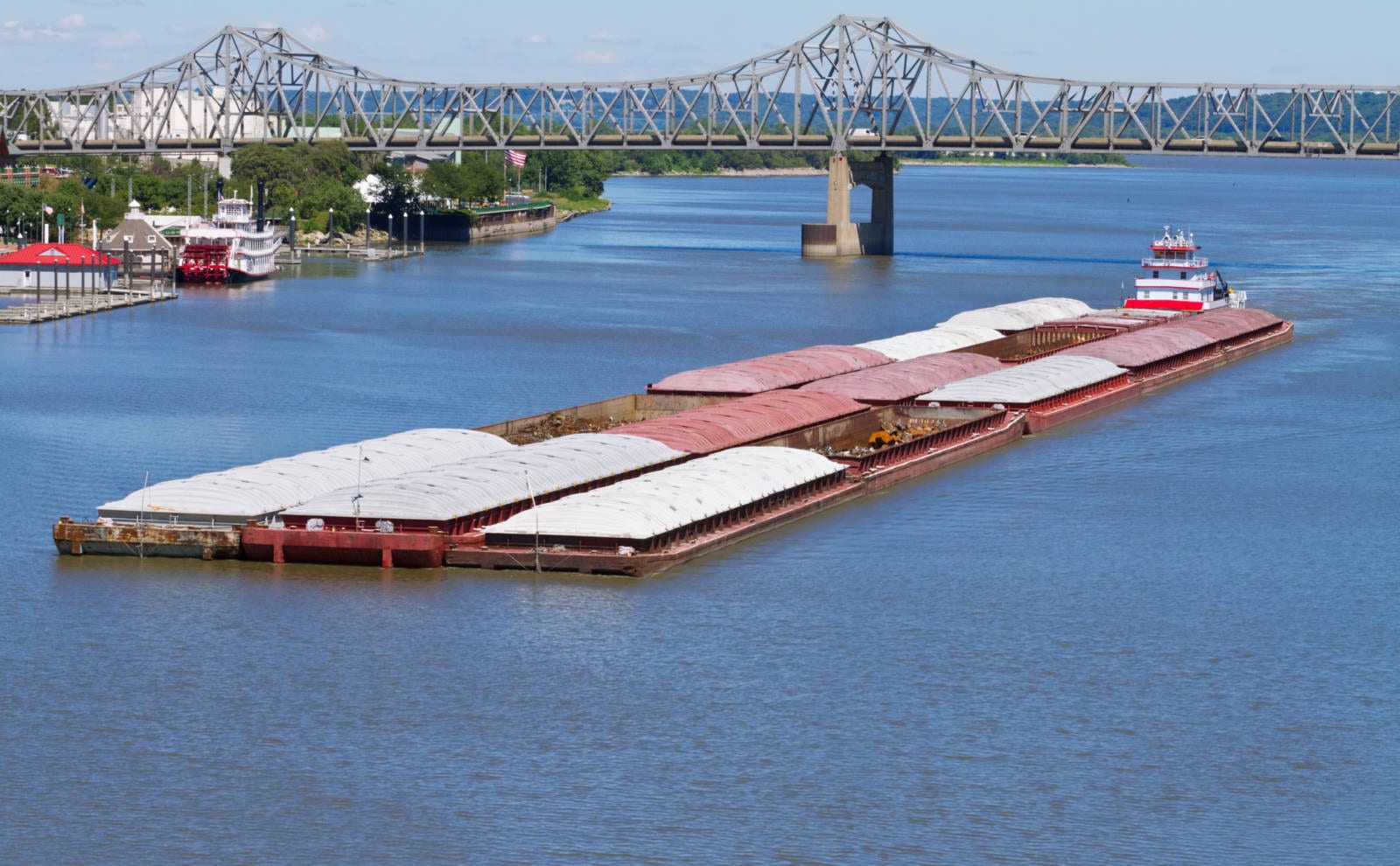Outside of a surging crude oil market, 2019 was a very tough year for the barge industry.
Coal is the largest commodity in terms of barge movement volume, but it continues to decline as coal plants switch over to natural gas. The Energy Information Agency continues to forecast a decline in domestic coal consumption. The explosion in higher U.S. liquid natural gas exports is replacing potential coal exports.
In term of ton-miles, grain and soybeans are the most important commodities. A ton-mile is distance times number of tons loaded on the barge. Crop barge movements are much longer distance than coal barge movements. Crude oil is very profitable but is transported in a tank barge. Coal and crops are transported in a dry barge with coal in an open barge and crops in a covered barge. Coal and grain barge movements were down, and river conditions were horrible in 2019.
Lock and Dam 27 at Granite City, Illinois is below where the Illinois River joins the Mississippi River but above St. Louis, Missouri. Soybean barge movements for 2020 are equal with 2018 and above 2019. Although the barge movements are better, the volume is still well below 2017 or before the trade war. It should be noted that the expectations in 2017 were for higher grain and soybean barge movements in 2018, 2019, and 2020 based on a hungry world requiring more food. Regardless, crop barge movements are improving.

Farmers above Lock and Dam 27 (Granite City, IL) are preparing for the river closing by making decisions relative to how many soybeans to sell versus keep in storage. The current flow of soybeans indicates a large percentage of the soybeans currently in storage will remain into the next export season. Conversations with farmers yielded stories of aggressive storage construction in 2019. The market actions are consistent with new storage being built, which means the soybeans will remain in storage until price improves or the farmer needs to sell the crop to generate revenue.
Of course, having product on hand does create opportunity if a major crop failure occurs somewhere in the world and/or the trade war ends. The U.S. has available supplies to quickly fill the void. Plentiful supply also encourages investors to build crushing plants, which increases local cash prices. The old trader adage of “Low prices cure low prices and high prices cure high prices” is still true today.

